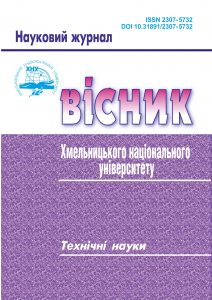COMPARATIVE ANALYSIS OF AXIAL AND CYLINDRICAL DESIGNS OF DIRECT CURRENT GENERATORS WITH A WINDING-FREE ROTOR FOR WIND POWER PLANTS
DOI:
https://doi.org/10.31891/2307-5732-2023-327-5-139-142Keywords:
axial, cylindrical, losses in steel, losses in copper, mass, efficiency factorAbstract
Currently, gearless multipole synchronous generators with magnetoelectric excitation are used almost everywhere on small wind power plants to convert the mechanical energy of the rotation of the windmill shaft into electrical energy. They have high reliability and efficiency, but a high price due to the ever-increasing cost of the rare earth metals used to make permanent magnets.
As an alternative to such generators, it is advisable to consider a direct current generator with an unwound rotor and electromagnetic excitation. There are no permanent magnets in its composition, due to which its price, compared to a synchronous generator of the same class, is significantly lower. The efficiency of such generator is slightly different from the efficiency of a synchronous generator of the same class.
A direct current generator with an unwound rotor can be of both axial and cylindrical type. In this article, a comparative analysis of these structures by mass and efficiency is carried out.
As you know, there are two means of obtaining high efficiency - a decrease in the current density of the armature winding or an increase in the diameter of the stator. Reduction of current density is more typical for use in axial-type electric machines.
For cylindrical electric machines, it is more common to increase the diameter of the stator. In turn, the diameter can be changed in two ways:
- maintaining the frequency of remagnetization of steel at the level corresponding to the high-speed analogue, thus fixing the level of losses in steel;
- maintaining the linear speed of rotation of the rotor at the level corresponding to the high-speed analogue, thus fixing the level of losses in copper.
The results of the comparative analysis show that the end design is better for working as part of a wind power plant.

